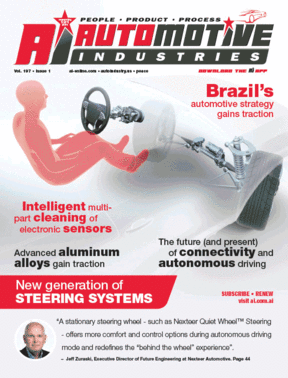
Disruption is nothing new to the motor industry. It disrupted transportation and society by replacing the horse and carriage in America within the decade between 1903 and 1913.
By 1920 there were eight million cars on the world’s roads. That escalated to 50 million by 1950, and a billion by 2010. The jury is out about when the world will reach two billion vehicles – or which companies will be making them. As Harvard Business School professor and industry analyst Clayton Christensen puts it: “Disruption is continuously afoot in every industry, but especially in autos. It is how Toyota, Nissan and Honda bloodied Detroit: They did not start their attack with Lexus, Infiniti and Acura, but with low-end subcompact models branded Corona, Datsun and CVCC”.
In this decade it could well be a Google or Uber that disrupts the status quo with their own vehicles. Conceived in 2009, Uber went international in 2011 when it launched in Paris, France. Uber itself is being disrupted by similar services, notably by the industry itself. Recognizing the trend auto makers have introduced their own car sharing services. BMW and Daimler have a combined 20,000 vehicles in 31 cities for short-term rental, with around four million registered users. The companies merged their Car2Go and DriveNow services in March 2018.
In August 2018 Volkswagen announced it would launch “We Share” in Berlin in the second quarter of 2019 with 1,500 VW e-Golf compact cars in the German capital. No market is safe from this kind of disruption – the company is offering a similar service in the central African country of Rwanda.
What these trends do mean is that the world will probably have fewer cars on the road than futurists have been predicting. The projections now focus on when vehicle sales in Europe and the US will peak. Emerging markets, like Rwanda, could well skip ownership and go straight to sharing. They did it with mobile phones. In 2000, Sub-Saharan Africa as a whole had fewer telephone lines than Manhattan alone. Now, over 50% of Africans have a cellphone. That technology leapfrog closes an entire continent to suppliers of copper wire-based telephony equipment.
A parallel in the auto industry is the shift to electric vehicles. Every electric vehicle that rolls off the assembly line uses hundreds fewer components than one powered by an internal combustion engine – making electric vehicles a direct threat or opportunity for component suppliers. Their competition will most likely come from start-ups with shiny Industry 4.0 plants and systems. Old-school Tier suppliers have to divide their energy and time between the internal combustion and renewables markets. As we see in this edition of Automotive Industries there are companies which are successfully straddling both worlds. They are among the leading innovators in the automotive world.
They, together with the OEMs, are investing in digital and transformation technologies required in the age of Industry 4.0, according to the Deloitte 2018 Industry 4.0 Investment Survey. More than half (55%) of automotive respondents said they planned to significantly increase investments in digital transformation in the coming year, with 4 in 10 reporting that investment in digital transformation had realized significant return on investment.
While productivity (45%) and operational goals (39%) are the top drivers of digital transformation, automotive respondents are more driven by competitive pressures (34%) and the desire for innovation (32%) than respondents from other industries. Neither shareholder engagement/demand (23%) nor regulatory pressure (18%) emerged as a top catalyst.
Of concern should be that just 16% identified the emergence of new business or delivery models as a challenge. Automotive Industries, which documented the transition from horse-drawn carts to internal combustion vehicles draws the attention of the other 84% to this quote from Uber’s Head of Aviation Programs, Eric Allison: “World trade means competition from anywhere; advancing technology encourages cross-industry competition. Consequently, strategic planning must consider who our future competitors will be, not only who is here today.”
And.
“The horse is here to stay, but the automobile is only a novelty — a fad” — Advice from a president of the Michigan Savings Bank to Henry Ford’s lawyer Horace Rackham.












More Stories
Automotive Industries (AI) Newsletter April 2025
GlobalLogic Pioneering Software-Defined Vehicles, AI Innovation, and Sustainable Solutions for the Future of Automotive Mobility
Cybord TCI – The Future of Manufacturing Integrity